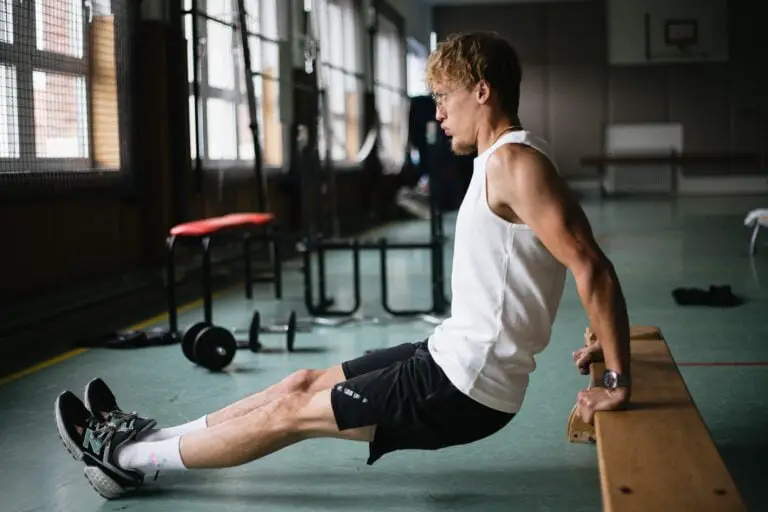The Ultimate Calisthenics Push Workout Routine
Calisthenics, a form of exercise that relies solely on bodyweight movements, has gained popularity for its effectiveness in building strength, flexibility, and endurance. The concept of callisthenics revolves around using your own body as resistance to training various muscle groups. Push workouts within the realm of calisthenics focus on enhancing upper body strength through a series of bodyweight exercises. In this article, we will explore the importance of calisthenics push workouts, the benefits they offer, the muscle groups they target, and how to create an effective routine.
Importance of Push Workouts in Calisthenics
Push workouts play a pivotal role in calisthenics routines. These workouts primarily engage the upper body muscles, including the chest, shoulders, and triceps. Push exercises are crucial for achieving a balanced physique and functional strength, which can be applied to everyday activities and sports.
Benefits of Calisthenics Push Workouts
A. No Equipment Requirement
One of the top benefit of calisthenics is that it requires minimal equipment. This makes it an accessible form of exercise that can be done virtually anywhere, whether you’re at home, in a park, or traveling.
B. Functional Strength and Real-Life Applications
Calisthenics push exercises mimic movements you encounter in your daily life. This type of functional strength translates to improved performance in activities like lifting objects, pushing doors, and carrying groceries.
C. Muscle Balance and Injury Prevention
Calisthenics push workouts focus on engaging multiple muscle groups simultaneously, promoting muscle balance and reducing the risk of imbalances that can lead to injuries.
D. Core Engagement and Stability
Many push exercises engage the core muscles for stability, enhancing overall body control and promoting a strong core.
E. Adaptability and Progression
Calisthenics push workouts can be tailored to your fitness level. Beginners can start with basic variations and gradually progress to more challenging movements as their strength improves.
Also read: Calisthenics upper body workout
Understanding Muscle Groups Targeted
A. Upper Body Muscle Groups Involved
- Chest Muscles: Push exercises like push-ups and dips target the pectoral muscles, helping to sculpt the chest.
- Shoulder Muscles: Shoulder muscles, including the deltoids, are engaged during movements like push-ups and handstand push-ups.
- Triceps Muscles: Triceps, located on the back of the upper arm, are activated during various push exercises, contributing to arm strength.
B. Core Engagement in Push Exercises
Push exercises also require core engagement to maintain proper form and stability. This inadvertently works the abdominal muscles, contributing to a strong core.
Calisthenics Push Workout Plan:
A calisthenics push workout focuses on exercises that target your upper body muscles, primarily the chest, shoulders, and triceps. Calisthenics workouts utilize bodyweight movements to build strength, endurance, and muscle definition. Here’s a sample calisthenics push workout routine for you:
Warm-up:
Start with a 5-10 minute dynamic warm-up to increase blood flow and mobility. This can include arm circles, shoulder rolls, neck stretches, and wrist rotations.
Workout:
This routine will focus on various push movements to target different muscle groups in your upper body. Adjust the number of sets and repetitions based on your fitness level. Rest for about 1-2 minutes between sets.
Also read: Calisthenics shoulder workout
1. Push-Ups:

Beginners: 3 sets of 8-10 knee push-ups
Intermediate: 3 sets of 10-15 standard push-ups
Advanced: 4 sets of 15-20 diamond push-ups
Push-ups are a fundamental calisthenics exercise that targets the chest, shoulders, and triceps.
2. Pike Push-Ups:
Beginners: 3 sets of 8-10 reps
Intermediate: 3 sets of 10-15 reps
Advanced: 4 sets of 12-15 reps (or Advance pike pushups)
Pike push-ups are great for targeting the shoulders. Keep your hips high and form an inverted V shape.
3. Dips (Parallel Bars or Chair):

Beginners: 3 sets of 8-10 reps (use a stable chair or bench)
Intermediate: 3 sets of 10-15 reps (use parallel bars if available)
Advanced: 4 sets of 12-15 reps (parallel bars)
Dips work the triceps and shoulders. Use parallel bars or stable chairs for this exercise.
4. Diamond Push-Ups:

Sets: 3
Repetitions: 8-12
Diamond push-ups emphasize the triceps. Place your hands close together in a diamond shape beneath your chest.
5. Push-Up Variations (Choose one):

Explosive Push-Ups: 3 sets of 10-15 reps
Archer Push-Ups: 3 sets of 8-12 reps (each side)
One-Arm Push-Ups (Advanced): 3 sets of 4-6 reps (each side)
Handstand Push-Ups (against a wall or freestanding, depending on skill level):
Beginners: 3 sets of wall-assisted pike push-ups (8-10 reps)
Intermediate: 3 sets of 5-8 reps of handstand push-ups against a wall
Advanced: 4 sets of 6-10 freestanding handstand push-ups (use wall support if needed)
Hold a handstand against a wall for balance and work on maintaining proper alignment. Start with shorter holds and gradually increase time.
Cool-down:
Finish your workout with some static stretches for the muscles you’ve worked. Focus on your chest, shoulders, triceps, and wrists. Hold each stretch for 15-30 seconds.
Remember, proper form is crucial to prevent injuries and maximize the effectiveness of your workout. If you’re a beginner, start with lower repetitions and gradually increase them as you build strength. As you progress, you can add more sets, increase the difficulty of exercises, or work towards advanced variations like one-arm push-ups or planche push-ups. Always listen to your body and make adjustments as needed. If you’re new to exercise, consider consulting a fitness professional or your healthcare provider before starting a new workout routine.
FAQs
Do I Need Special Equipment for Calisthenics Push Workouts?
No, you don’t need special equipment. Calisthenics push exercises use your own body weight as resistance. However, you may benefit from having a stable surface for exercises like dips or push-ups.
Are Calisthenics Push Workouts Effective for Building Muscle?
Yes, calisthenics push workouts are effective for building muscle. They engage multiple muscle groups and can lead to balanced muscle development when performed with proper form and consistency.
How Can I Progress in Calisthenics Push Workouts?
Progression can be achieved by increasing the number of repetitions, performing more challenging variations, adjusting leverage, or exploring advanced exercises like muscle-ups and planche progressions.
How Many Times a Week Should I Do Calisthenics Push Workouts?
The frequency of your calisthenics push workouts depends on your fitness goals and recovery ability. Beginners might start with 2-3 sessions per week, while more experienced individuals can aim for 3-4 sessions.






